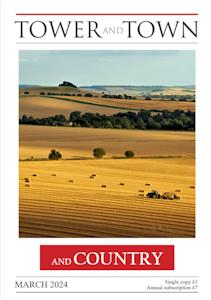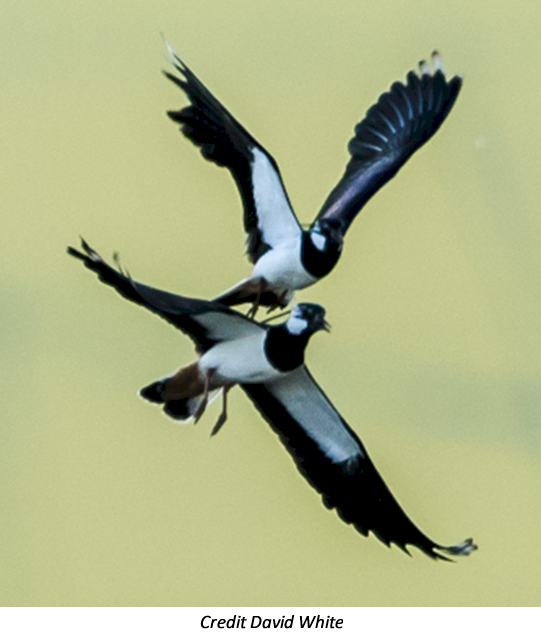

Tower and Town, March 2024 (view the full edition) (view the full edition)Nature NotesOn a recent visit to the Slimbridge Wetland Reserve in Gloucestershire I listed an impressive range of wader species: golden plovers and lapwings by the thousands, a flock of black-tailed godwits, redshanks, curlews, avocets, ruff, dunlin, snipe and oystercatcher. Back in Wiltshire we cannot compete with that variety and number of birds, but with the advent of spring in mid March we do have one or two special wader species returning to their favoured haunts, year after year. The stone curlew is perhaps the most iconic of our downland species, arriving from Southern Europe and Northern Africa to nest on barren, flint-strewn fields along the Pewsey and Marlborough Downs and on Salisbury Plain. Seventy-three pairs were confirmed breeding in Wiltshire in 2021, making it scarce, but increasing after a former decline. It is not a bird of marsh and wetland, the bill is short and stubby, so how can it be classified as a form of curlew? The answer lies in its eerie calls of 'coor-lee, coor-lee,' often heard at dusk and at night when it is most active. With its cryptic, oatmeal-brown plumage and secretive manner it is difficult to pick out against a background of broken earth, flints and low vegetation.  Its companion in this habitat is the lapwing or green plover, but this is now a decreasing breeder. This is especially sad, for the display flight of the male is an entertaining sight on cold bright mornings in early spring. The bird rises slowly from the ground then quickens, rising at an abrupt angle before suddenly plunging downwards, turning and twisting with wings thrown about as if out of control. As well as the characteristic 'peer-weet' call, another sound is created by its beating wings - a strange, vibrant throbbing noise. A few oystercatchers and redshanks breed in the Cotswold Water Park and they're joined by another special bird, the little ringed plover, a diminutive summer visitor that favours a drained or working gravel pit as a nest site. Like the lapwing its courtship routine is eccentric - a butterfly-like display flight involving endless circling on slow wing-beats, followed by steep ascents or plunging dives. Injury-feigning is another of its tricks, dragging a faked broken wing to draw a potential predator away from the nest-site. They are all a bit bonkers these Wiltshire waders: the snipe with its bleating flight, caused by the vibration of its outer tail feathers and the 'roding' woodcock marking out its territory at dusk, calling with comical grunts and squeaks! Robin Nelson |